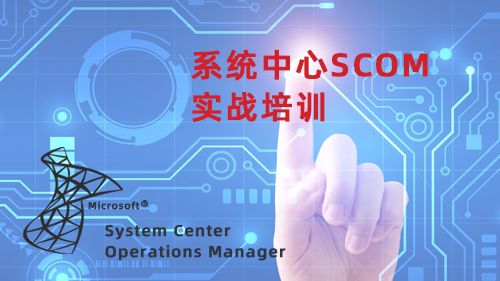课程大纲
outline
1、Technical Overview of System Center Operations Manager 2012/2016
Feature overview
New features in SCOM 2012/2016
Architecture – how it works
Server components and communications
2、Designing and Sizing a SCOM 2012/2016 Infrastructure
Design considerations
Hardware and software requirements
Sizing the SCOM servers
Planning Management Groups and server roles
Planning for disaster recovery
Upgrade considerations
3、Installation and Configuration
Install SCOM 2012/2016 on Management Servers
Establish Management Group
Introduction to the Management Console
Configure Management Group settings
Resource Pools (new in 2012/2016)
Installing and implementing the web console
4、Managing Agents
Installation methods
Managing agents in the console
Managing agents from control panel (new in 2012/2016)
Agent settings
Configuring Active Directory integration and Service Connection Points (SCP’s)
Configuring Agentless Exception Monitoring (AEM)
Managing UNIX/Linux computers
Monitoring network devices (new in 2012/2016)
How to manage untrusted (non-domain) agents
5、Management Pack Fundamentals
Architecture/components of management packs
Downloading and importing management packs
Management pack views and results
Understand the Default management pack
6、Operations
Working in the console as an operator
Views
Understanding the health engine
Filtering data
Dashboard views (new in 2012/2016)
Notifications
My Workspace
Tasks
7、Reports
Configuring SQL Reporting Services
Installing SCOM reporting features
Running and viewing reports
Custom reports
8、Fine Tuning SCOM Data
Working with overrides
Defining thresholds
Best practices for making the data relevant
Reducing alert flooding
Managing notifications effectively
9、Creating Custom Management Packs
Introduction to the Authoring Console
Best practices for custom management packs
Synthetic Transactions (Perspectives)
.NET Application Performance Monitoring (new in 2012/2016)
Distributed Applications
Including views, reports and tasks in your management pack
